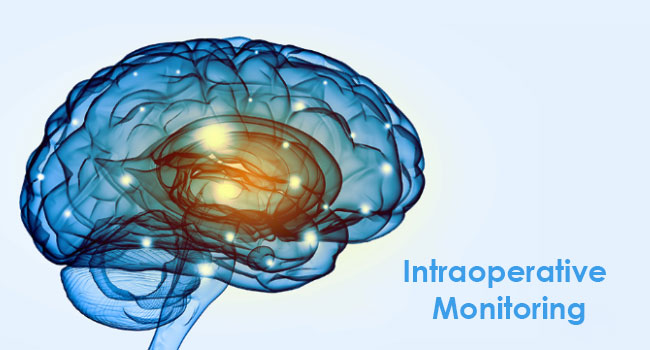Intraoperative nerve monitoring (IOM) enables surgeons to monitor and control the function of the nerves during a surgical procedure. When neurosurgery and spinal surgery are required, this entails the use of advanced technology equipment that have become the standard of treatment. These devices gather important information from a patient’s central nervous system during the duration of an operation by using a variety of methods to assess the muscle response or electrical activity from numerous muscles in response to nerve stimulation. The IOM devices are intended to notify the surgeon through sound or visual signals that nerve function may be impaired. This may help reduce the chances of permanent nerve damage occurring.
While having surgery, monitoring may be established to avoid damage to the brain, spinal cord, cranial nerves, and peripheral nerves throughout the body. IOM is very useful for doing sensitive operations on the spine or spinal cord, brain, or a nerve-rich region. In certain cases, brain function may be impaired, which can result in a permanent loss of ability in specific parts of the body. The IOM may significantly help the surgeon by notifying him or her that sensitive tissue is being damaged so that a different strategy can be adopted or the operation can be halted before severe damage occurs.
IOM is used to reduce the chance of postoperative complications such as muscular weakness, paralysis, lack of sensation, hearing or vision loss, and other types of neurological impairment. The use of IOM is beneficial in avoiding several possible problems during spine surgery. Once the surgeon is notified of the device of impending nerve tissue damage or the beginnings of nerve tissue damage, repair may be carried out to prevent loss of function. As a consequence, spinal surgical operations are safer and more successful.
Somatosensory evoked potentials (SSEPs), which are used to assess the transmission of impulses via the spinal cord, are one of the most frequently utilised IOM methods for spinal surgery. Electrodes are placed on areas of the body that may be impacted neurologically as the process proceeds. The IOM device records the electrical activity.
Electromyography (EMG), which measures muscular electrical activity to assess the health of the muscles and nerves that control them. Thin needle electrodes are introduced through the skin and into the muscle, detecting and reporting electrical activity.
IOM systems are a significant advance over previous techniques of preserving nerve function during complex operations. Prior to this advancement, neurosurgeons had to perform a wake-up test or a clonus test during a surgery to assess the nerves that may be affected. When a wake-up test was performed, the patient was given an anaesthetic that rapidly wore off. When the patient regained consciousness, he or she was asked to move certain areas of the body to assess motor function.
During the clonus test, the surgeon stretched the patient’s ankle while the patient was still under anaesthetic. Repeated contractions of the muscles in the region in a rhythmic movement would be an aberrant response indicating neurological dysfunction.
Uses
Surgeons often utilise IOM for procedures like as:
- Spinal cord disorders
- Vertebrectomy
- Corpectomy
- Scoliosis
- Complete disc replacement
- Spinal diseases
- discectomy or decompression

